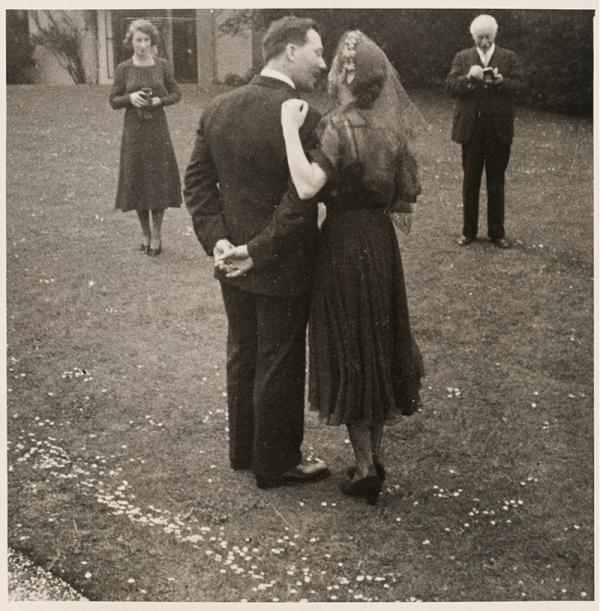When researching this exhibition, we did a survey of which months were the most popular for weddings among our selection of dresses and the nearly 240 years they cover. While July proved the most popular month, with nine weddings and one date on which two weddings were held, the only other double up of dates fell in June. Although the weddings were 36 years apart, on the 18th June both Edith Hope-Murray and Monica Maurice got married.

Edith married Thomas Senior at Christchurch, Upper Norwood, in south London in 1902. Monica married Dr Arthur Jackson at the Chapel of Our Lady on Rotherham Bridge in South Yorkshire in 1938. They might have shared a date, but beyond that the two women, and the dresses they chose for their weddings, are strikingly different. This week would have been Edith’s 112th and Monica’s 76th wedding anniversary. To mark the occasion, here’s a look at their dresses in a little more detail.

Edith was a clergyman’s daughter, who, on marrying Reverend Thomas Senior, also became a clergyman’s wife. With both those distinctions, she had a high social standing in the affluent middle-class suburb of Upper Norwood, where she and her family lived. As a result, her wedding attire needed to be both dignified and sophisticated, and she bought a dress from a skilled local dressmaker named Houghton & Dalton.

The dress is made up of a separate cream silk bodice and skirt. Its high neck centres the decorative darts and embroidered flowers which are sewn to the bodice and sleeves. After an enviably – or worryingly! – nipped in waist, the skirt swells into a stately, heavy lined train. The design is both structurally impressive and ornate. The dart and pleated sections of silk rest underneath the embroidered flowers, creating a decorative panelled perspective.


Both the Arts and Crafts and Art Nouveau movements used similar floral and leaf designs in their work at the turn of the twentieth century. It is very possible that, due to the popularity of both groups at the time, as their influence spread through interiors, textiles and into fashion, the decorations of Edith’s dress were in part inspired by this style.


Edith and Thomas’s grandson Chris recently got in touch with us, to share his discovery of the receipts from the couple’s honeymoon. The Seniors stayed first at Edwinstowe in the middle of Sherwood Forest, and then at the recently opened and very grand Victoria Station Hotel in Nottingham. The couple clearly planned a well to do start to their married life, in keeping with their social status and position within their local community. Edith’s dress, a subtle but sophisticated design, demonstrative of wealth, taste and workmanship, plays perfectly into this image.

Jumping forward to 1938, a very different bride prepared for her wedding. Monica Maurice worked as an electrical engineer with the Wolf Safety Lamp Company. As well as getting married in 1938, that year she also became the first – and, until 1978, only – female member of the Association of Mining Electrical Engineers. She travelled to Germany regularly in the 1930s and ran the Wolf Safety Lamp Company from 1951 to 1979 alongside raising three children, going on to receive an OBE in 1975. While most of our brides smile demurely in the wedding photos we have collated, in hers Monica is caught mid-cackle, her face lit as she laughs with her new husband, Dr Arthur Jackson. Clearly, in Monica, we have found a vibrant and independent bride, on the cusp of modern times and changes in marital roles.

A bold bride should have a dress to match, and Monica did not disappoint. She loved clothes, cars, flying – and red. For her wedding, she chose a ruby-coloured silk gauze dress. A calf length shirt dress with blue belt and buttons, the dress is both in keeping with fashions of the time and a quirky demonstration of her own taste and character.
Each of our June brides used their dresses to signify both their personalities and their status as they moved into married life, and their anniversary has given us an interesting opportunity to revisit and celebrate their choices.
